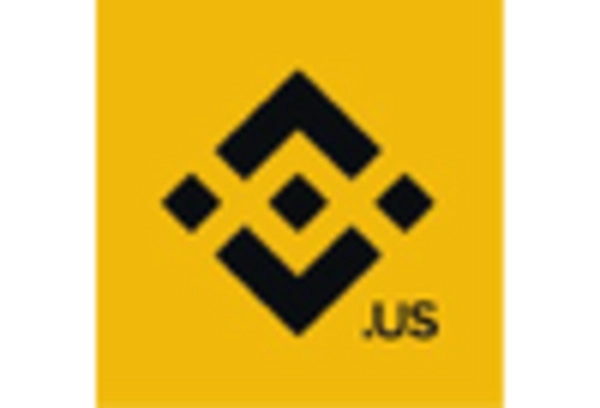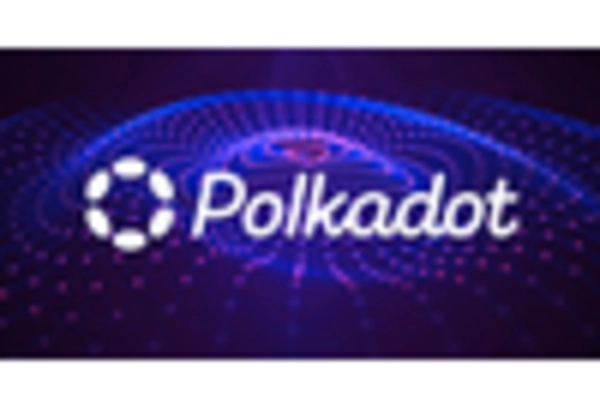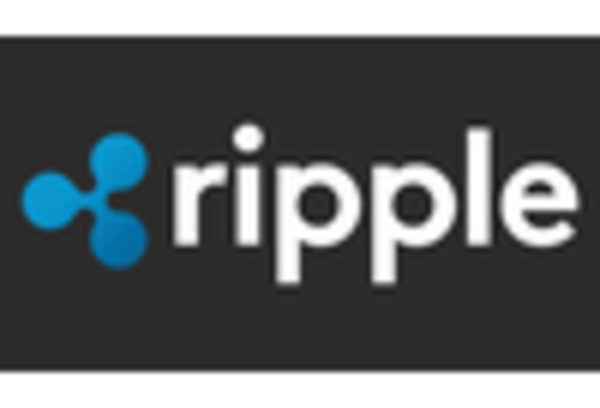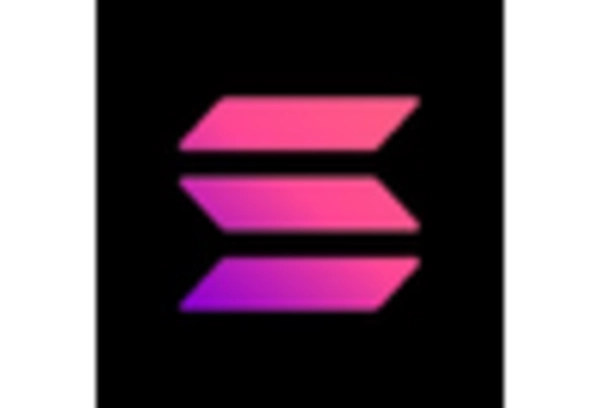Rising Demand for Digital Assets
The web 3.0 blockchain market is experiencing a notable surge in demand for digital assets, driven by the increasing acceptance of cryptocurrencies and tokenized assets. As of November 2025, the market capitalization of cryptocurrencies in the US has reached approximately $2 trillion, reflecting a growing interest among investors and consumers alike. This trend is further fueled by the proliferation of blockchain-based platforms that facilitate the creation and trading of digital assets. The rise of non-fungible tokens (NFTs) has also contributed to this demand, as they offer unique ownership experiences in the digital realm. Consequently, businesses are increasingly exploring ways to integrate digital assets into their operations, thereby enhancing their value propositions and attracting a broader customer base in the web 3-0-blockchain market.
Regulatory Developments and Compliance
Regulatory frameworks surrounding the web 3.0 blockchain market are evolving, with US authorities actively working to establish guidelines that promote innovation while ensuring consumer protection. As of November 2025, the US Securities and Exchange Commission (SEC) has introduced clearer regulations regarding the classification of digital assets, which has instilled greater confidence among investors. This regulatory clarity is likely to encourage more businesses to adopt blockchain technologies, as compliance becomes more manageable. Furthermore, the establishment of regulatory sandboxes allows startups to test their blockchain solutions in a controlled environment, fostering innovation. As a result, the web 3-0-blockchain market is poised for growth, as companies navigate the regulatory landscape to leverage the benefits of blockchain technology.
Increased Investment in Blockchain Startups
Investment in blockchain startups is witnessing a significant uptick, as venture capital firms and institutional investors recognize the potential of the web 3.0 blockchain market. In 2025, venture capital funding for blockchain-related projects in the US has surpassed $30 billion, indicating a robust interest in innovative solutions that leverage decentralized technologies. This influx of capital is enabling startups to develop cutting-edge applications, ranging from decentralized finance (DeFi) platforms to supply chain solutions. The competitive landscape is intensifying, as established companies also seek to invest in or acquire blockchain startups to enhance their technological capabilities. Consequently, this trend is likely to accelerate the development and adoption of blockchain solutions across various industries, further propelling the growth of the web 3-0-blockchain market.
Growing Interest in Decentralized Applications (dApps)
The web 3.0 blockchain market is witnessing a growing interest in decentralized applications (dApps), which offer users enhanced control and privacy. As of November 2025, the number of active dApps has increased significantly, with thousands of applications available across various sectors, including finance, gaming, and social media. This trend is driven by the desire for alternatives to traditional centralized platforms, as users seek greater autonomy over their data and transactions. The rise of dApps is also supported by advancements in blockchain technology, which enable faster and more efficient transactions. As more developers create innovative dApps, the web 3-0-blockchain market is likely to expand, attracting a diverse user base and fostering a vibrant ecosystem.
Technological Advancements in Blockchain Infrastructure
Technological advancements in blockchain infrastructure are playing a crucial role in shaping the web 3.0 blockchain market. Innovations such as layer-2 scaling solutions and interoperability protocols are enhancing the efficiency and usability of blockchain networks. As of November 2025, these advancements are enabling faster transaction speeds and lower fees, making blockchain technology more accessible to a wider audience. Additionally, the development of cross-chain solutions is facilitating seamless interactions between different blockchain networks, thereby expanding the potential use cases for blockchain applications. This technological evolution is likely to attract more businesses to explore blockchain integration, ultimately driving growth in the web 3-0-blockchain market.

















Leave a Comment